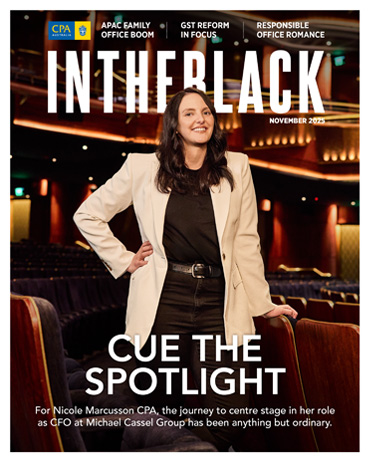Loading component...
At a glance
According to The Hays 2025 Skills Report 2025, 85 per cent of hiring managers in Australia and New Zealand are reporting a skills gap that is negatively impacting team and organisational performance.
In the accounting and finance industry, that number is slightly higher at 86 per cent.
In response, organisations are adopting creative ways to remain competitive and access the talent they need in a rapidly evolving landscape.
Organisations can address these challenges by considering three strategic approaches to workforce development: upskilling, reskilling and new skilling.
“In a nutshell, reskilling is preparing people for entirely new roles, often due to restructures or technical transformations that change how work is done,” says Jessica May, learning and development manager at HR agency HumanX.
"Upskilling shows an investment in someone, which is positive. If you can determine that you need certain skills in your organisation long term, the best approach is to bring people along with you."
“Upskilling is taking an existing skill and making it better or more advanced, while new skilling is looking for completely different capabilities.”
Knowing which approach to use and when depends on several factors, advises May, including the nature of the skill gap, the urgency of the need and the long-term strategic goals of the organisation.
“You really need to understand what skills are needed for the next six to 12 months. My advice is to slow down, so you can speed up — work out what you need and then be strategic about the combination of ways you can fill your current gaps and potential future ones,” she says.
Choose the right strategy
1. Upskilling

There are several benefits to upskilling, including cost, retention and faster integration, says workplace expert Michelle Gibbings.
“Upskilling shows an investment in someone, which is positive. If you can determine that you need certain skills in your organisation long term, the best approach is to bring people along with you,” she says.
A good example of upskilling is training employees on the use of large language models, such as ChatGPT and Microsoft Copilot. Being clear about the benefits of new technology, helping people understand how it can improve their work performance and putting guidelines in place, is a very effective strategy, Gibbings says.
But there are also drawbacks. Upskilling may not address significant gaps if the required skills are entirely new or employees could feel overwhelmed if additional responsibilities are being added to their roles without adequate support, she notes.
2. Reskilling
Supporting employees to reskill for a new role can often be appropriate during restructures or technical transformations that fundamentally change how work is done.
“The retention of knowledge is an advantage of this approach,” Gibbings says. “But it requires significant training and adjustment periods, and there is no guarantee that employees will successfully adapt to the new role.”
3. New skilling
In other cases, an organisation may determine that bringing in outside skills is the best approach, rather than looking internally. This can be done in a variety of ways, says May, including recruiting for completely new roles or accessing the skills needed temporarily to teach existing employees the skills needed.
“People are starting to get a bit more creative in how they are recruiting. They are identifying the key skills people need in a role and are looking for people who may not have worked in the accounting and finance space, but have transferable skills,” she says.
Understanding employee readiness is essential

When it comes to addressing skills gaps, employee readiness is a crucial concept, particularly in a rapidly evolving sector like finance, argues Dr Stephen Billett, professor of adult and vocational education at Griffith University.
“Understanding employee readiness — their ability to constructively engage with something new — is important, because unlike traditional educational settings, the levels and kinds of skills that adults in the workforce possess are highly diverse,” he says.
“If you understand what someone’s level of readiness is, it will help to determine the appropriate approach to skill development — whether it is upskilling, reskilling or new skilling. Depending on their readiness, some individuals may thrive with a self-directed project, while others will require more guidance and reassurance.”
Create a culture of continuous development
Presenting skill development as an opportunity to broaden skill sets, guide new career paths and remain relevant is also key for employee buy-in, as is building a company culture of continuous learning.
“The constant evolution of technology like AI creates a need for workplaces to become ‘learning practices’, where ongoing development is supported,” Billett says.
Such a culture also provides a competitive advantage in a tight labour market. For younger generations, access to growth and development opportunities is a key factor in job satisfaction and retention.
"Understanding employee readiness — their ability to constructively engage with something new — is important, because unlike traditional educational settings, the levels and kinds of skills that adults in the workforce possess are highly diverse."
May confirms the importance of a learning and development culture. “For younger generations, one of the reasons that people will leave companies is if they feel like they’re not being given growth and development opportunities.”
“For older generations, it can also be an opportunity to develop the skills to use technology to perform some of the manual tasks they may have previously done, which frees them up for more strategic work that calls on their experience,” May says.
Need to move fast? Try a hybrid approach
When rapid skill evolution is essential, organisations often face a dilemma: should they expedite the process by hiring external experts or invest time in developing internal talent? In Gibbings’ experience, a hybrid approach can be highly effective.
“It’s important to recognise that relying solely on external expertise without a plan for knowledge transfer can lead to a dependency that doesn’t foster long-term growth. Therefore, a balanced approach — leveraging external expertise for immediate needs while investing in internal development for sustained success — is often the most beneficial strategy.”

